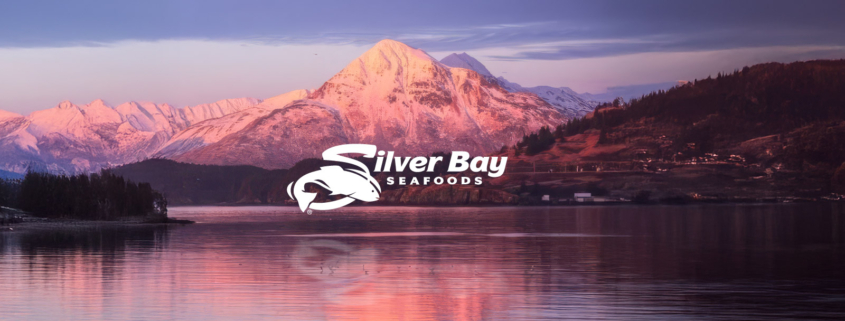Silver Bay’s emergence as Alaska salmon sector heavyweight catalyzes focus quality
It will be interesting to watch what Silver Bay does next, given the size it has grown to, four financial executives in the US seafood industry told Undercurrent.
Alaska’s salmon sector is still unstable after several difficult years, but one clear winner has emerged from the turmoil: Silver Bay Seafoods (SBS).
Seattle, Washington-headquartered SBS has been on an acquisition spree since 2023, buying OBI’s 50% share of 10 Alaska plants in February and taking over additional plants previously owned by Peter Pan Seafoods and Trident Seafoods last year, as reported by Undercurrent News. It also bought Washington-based value-added processor Orca Bay Seafood in early 2023.
SBS now has more than $1 billion in revenue and controls at least a 60-70% share in processing Alaskan pink and sockeye salmon, according to a senior banking executive serving Alaska’s seafood sector.
“Silver Bay is definitely the big kahuna. What they have built has been amazing to see,” the source told Undercurrent.
“Honestly, I was a little surprised at how much they took on over the last 24 months.”
SBS’s move has been against the grain, as several other historical leaders in Alaska’s salmon industry have pulled back, including fellow Seattle-based Alaska giant Trident Seafoods, which sold four of its Alaska plants in a fire sale last year.
“Silver Bay has made the bet that they can be profitable if they’re the 800-pound gorilla in Alaska, that just by sheer scale, they can be the most efficient,” the source said. “It makes a huge difference for them, allowing them to be a little more flexible and nimble in response to the market.”
The executive said SBS’s business model of having fishermen as owners is another factor in its favor.
“Because those fishermen are locked in and see all the books, they have the trust,” they said.
SBS’s growth has been impressive, according to Mark Working, the cofounder and managing partner of Zachary Scott, a Seattle-based boutique investment bank that provides mergers and acquisitions, capital advisory and strategic financial consulting services to privately held middle-market companies, including many in Alaska’s seafood industry.
“Silver Bay didn’t exist until 2007, so if you think about what they’ve accomplished in the short amount of time they’ve been around, it’s amazing,” he said.
The company’s emergence as the biggest player in Alaska’s salmon industry “might actually be good for everybody” in the industry, making it more likely that economic decisions will be made to maximize profits, which hasn’t been the case for all companies in Alaska’s salmon sector in recent years, Working said.
“Other companies will largely will follow them on prices. It means the fishermen are going to get paid a fair price, and not face boom-bust cycles of companies making blowout offers one year and then unable to operate the next, like with what happened in 2022 and 2023. It also means good prices in the marketplace, with greater consistency for everyone. There won’t be the big swings we saw in previous years.”
However, Working and other financial experts interviewed by Undercurrent said Alaska’s salmon industry is still in transition.
SBS has now realized most of the gains it can through consolidation and scale, and now must focus on improving the quality of its salmon products, Working said.
“The benefits of Silver Bay’s model will fund the next phase of innovation. Their next phase will be to attack quality,” he said. Further plant-level consolidation is likely, although within entities, Working said, as new highly efficient plants are built to replace old infrastructure.
“With all the indirect costs having been squeezed out, direct production efficiency is the only remaining path to higher profits and a sustainable future,” he said.
Quality will be the centerpiece of the next chapter of Alaska’s salmon industry, Antarctica Advisors director C.J. Arrigo agreed.
“In the past, there’s been such harsh, intense competition between the Tridents, the Peter Pans, the Silver Bays, and now that Silver Bay is the big kahuna, they can focus more on quality,” he said.
SBS’s acquisition of Orca Bay will likely help this transition, given its history of innovation.
“They are going to have to take some of that creative stuff that Orca Bay did and really do something to grab the full margin,” Arrigo said.
“In the long run, I think you’ll see the industry move away from the pure ‘dump it at the docks’ mentality to being more vertically integrated and value-focused through the whole supply chain.”
Ultimately, Alaska’s salmon sector — led by SBS — must insinuate itself further downstream, working to get more Americans to buy wildcaught, domestic salmon in the grocery store or out for dinner, according to Jana Singleton, a senior vice president with Bank of America, who works closely with the seafood industry in the Pacific Northwest.
Even in a tough market, Singleton said, “There are always opportunities and ways to make challenges become opportunities.”
SBS needs to be a leader in discovering the answer to the question “How much power does the Alaskan seafood space have to [move the needle on] the perennial question of increasing seafood consumption?” Singleton said.
“Consumers need to know there are other choices out there for consumers who [are concerned about] where their food comes from and what it takes to get their food to them, and who understand the benefits of feeding their family with Alaska seafood,” Singleton said.
Knowing that the US consumer has a variety of choices that they can bear the price points for, even in times of lower consumer income, that choice does not have to be the traditional or past focus on canned salmon, which generally is going to have a lower price point.”
SOURCE: Undercurrent News



